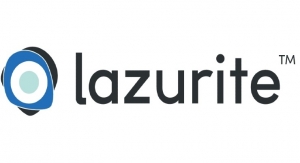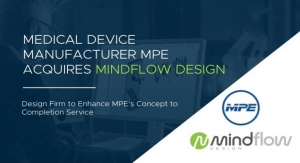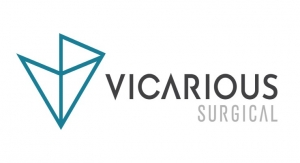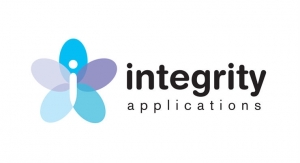Blake E. Wilson and Shilpa Prem, Hogan Lovells04.03.18
In January 2017, India’s Ministry of Health and Family Welfare released the long-awaited Medical Device Rules of 2017 (MDR 2017 or the Act), which took effect on Jan. 1, 2018. Upon implementation, this regulation replaced the existing Drugs and Cosmetics Act (DCA).
Prior to implementation of the Act, the medical device industry in India was largely unregulated, except for a few devices1 covered specifically by the DCA. The list of covered devices was limited (only 15 medical devices were included), and the DCA treated these devices as drugs rather than establishing regulations tailored to the medical device industry. The implementation of MDR 2017 attempts to establish a uniform regime for Indian medical device manufacturing and marketing. The structure of this regulatory paradigm appears to be on par with global norms, including the EU’s Medical Device Regulation, although the extent of these similarities will depend upon India’s implementation of the Act.
It is expected that the global medical devices and technology market will grow to USD 529.8 billion by 2022 from an estimated USD 371 billion in 2015.2 The Indian market is among the top 20 in the world by market size, and fourth in Asia after Japan, China, and South Korea.3
Currently, 75 percent of medical device sales in India are derived from imports.3 A range of factors contribute to the high percentage of imports, including the absence of a concrete regulatory framework specific to medical devices, which has been believed to have constrained investments in the market.
Business growth has been of utmost importance for the Indian government. During the Wharton India Economic Forum, held Nov. 12, 2017, business leaders around the world echoed the theme of the “Make in India” campaign—a government program rolled out in 2016 to provide a more favorable environment for domestic manufacturers in the hopes of encouraging more long-term investments. As part of the “Make in India” campaign, implementing medical device regulations was a strategic effort to enhance the business environment, thereby encouraging the domestic development and manufacturing of medical devices.
Central Government and State Government bodies will be responsible for implementation and enforcement of MDR 2017. Medical device approvals will be conducted by the Drugs Controller General of India (DCGI) who will also be responsible for overseeing clinical trials, import licenses, and device classifications.
Following are eight notable provisions from India’s new medical device regulations that will impact both domestic and foreign medical device developers and manufacturers wanting to do business in India.
1. Medical devices and in-vitro diagnostics will be classified into four categories, depending upon the indications for use and risk level of the device.
The new rules establish a risk-based approach, whereby the level of regulation varies considerably depending on the risks and technology associated with the device’s intended use and technological characteristics. Four classes (Class A, B, C, and D) have been established under the new framework, where Class A and B present the least risk and Class C and D devices present higher risk to patients.4 For example, an elastic bandage or a mechanical barrier used for compression or for absorption of exudates for wounds that have not breached the dermis and can heal by primary intention would be classified as a Class A device.5 An example of a Class B medical device is contact lenses6 whereas a blood bag that does not incorporate a medicinal product would be considered a Class C device.7 Finally, a transient-use surgically invasive medical device intended to be used specifically in direct contact with the central nervous system or for the diagnosis, monitoring, or correction of a heart defect or central circulatory system condition through direct contact with body parts would be an example of a Class D device.8
2. DCGI determines device classification.
As compared to the U.S. Food and Drug Administration (FDA), the DCGI classifies all proposed medical devices.9 In the United States, manufacturers and importers classify their products for the purposes of registration and propose device classifications in marketing applications (although FDA has the ability to reject proposed classifications). Conversely, in India, the license authority will classify the medical device based on the intended use of the device and other factors, such as the invasiveness of the device, duration of device use, presence of an “active therapeutic/diagnostic,” and whether the medical device incorporates medicinal product/human cells/tissues/derivatives.10
It should be noted that accessories will be classified separately from the parent device.10 If the device is intended to be used in combination with another device, the classification rules will apply separately to each of the devices.
3. Inspections are required for all new Class C and D medical devices.
Similar to the requirements of the EU Medical Device Rules, before the government grants an entity a license to manufacture or distribute a device that is classified as either a Class C or D product, the manufacturing site will be inspected within a period of 60 days from the date of the marketing application by notified bodies or other delegated government entities to verify conformance with quality management system regulations.11 Further, an inspection report will be completed by the inspection team with recommendations and findings that will be provided to the licensing authority. Once the inspection report has been received, the government will have 45 days to either grant a license to manufacture/distribute the device or reject the application.11
4. All proposed medical devices will be expected to conform to performance standards.
Medical devices will need to conform to performance standards imposed by the Bureau of Indian Standards (BIS) or as prescribed by the Ministry of Health and Family Welfare in the Central Government. The rule further states that if there are no relevant standards recommended by BIS, then relevant standards released by the International Organization for Standardization (ISO) or the International Electro Technical Commission (IEC), or by any other pharmacopoeial standard would need to be followed. If no relevant standards exist, then the validated manufacturer’s standards will need to be used.12
5. Timelines have been specified.
The rules specify timelines for various actions. For example, the review of a marketing application for a Class C or Class D medical device must be completed within 45 days from the date of the online submission.13 Further, inspection of the manufacturing site for medical devices classified as Class C or Class D must be completed within 60 days from the date of the initial application.14 Furthermore, after completion of the inspection, the inspection team must forward the inspection report to the licensing authority, who then has 45 days to make a final approval determination.15 Setting forth timelines in the Act provides hope that the application process will be transparent. As these rules only took effect in January 2018, it remains to be seen whether the Central Government and State Government bodies, in conjunction with the DCGI, will adhere to these set timelines.
6. Licenses are perpetual.
Medical device licenses that are granted will remain valid in perpetuity, as long as license fees are paid every five years from the date of issue, unless the license is suspended or cancelled by the licensing authority.16 If the licensee fails to pay the required license retention fee on or before the due date, the entity will be liable to pay late fees in addition to the license retention fee. If the licensee fails to deposit the license retention fee within 180 days, the license is deemed to have been cancelled. Therefore, continuous monitoring of granted licenses is required.16
7. Prior approval is required for major medical device changes.
Major changes require prior approval from the appropriate licensing authority.17 Examples of major changes include a change in material of construction, a design change that affects the quality, a change in the intended use or indications for use, a change in performance and stability, change in method of sterilization or approved shelf life, change of domestic manufacturer name, or change of manufacturing site. The licensing authority must approve or reject the change within 45 days.17
Minor changes (e.g., changes that will not affect quality) only require written notice to the appropriate licensing authority within a period of 30 days of making the change.18
8. Clinical investigation framework added.
The Medical Device Rules have added a new regulatory framework for clinical investigations.19 The government requires that clinical investigations in humans be approved prior to initiation. Further, permission must be obtained to import or manufacture investigational medical devices to conduct clinical investigations.20
Further Reference
Other notable provisions include the following:
The rule has conditions that must be met once a clinical study protocol has been approved.22
Conclusion
Implementing a detailed regulatory framework may lead to enhanced data generation and overall greater confidence in the safety and effectiveness of devices developed and manufactured in India.
The Indian Government has emphasized the importance of the medical device industry through its “Make in India” initiative.23 A task force was specifically developed to implement a range of recommendations to promote medical device manufacturing in India, which included the separation of medical devices from the drug laws.
Further, it is believed that these rules will enhance the ease of conducting business in India by setting transparent requirements, expectations, and timelines to ensure that safe and effective medical devices are able to enter the market on a global scale.
References
Blake Wilson is a senior associate in the Regulatory practice at Hogan Lovells in Philadelphia, Pa. He advises clients on matters related to the U.S. Food and Drug Administration’s regulation of medical devices, with a particular focus on premarket approval or clearance.
Shilpa Prem is an associate in the Regulatory practice at Hogan Lovells in Philadelphia. She represents clients in FDA medical device approval and clearance associated matters and conducts regulatory due diligence for medical device manufacturers in mergers, acquisitions, joint ventures, and private equity/venture capital investments deals.
Prior to implementation of the Act, the medical device industry in India was largely unregulated, except for a few devices1 covered specifically by the DCA. The list of covered devices was limited (only 15 medical devices were included), and the DCA treated these devices as drugs rather than establishing regulations tailored to the medical device industry. The implementation of MDR 2017 attempts to establish a uniform regime for Indian medical device manufacturing and marketing. The structure of this regulatory paradigm appears to be on par with global norms, including the EU’s Medical Device Regulation, although the extent of these similarities will depend upon India’s implementation of the Act.
It is expected that the global medical devices and technology market will grow to USD 529.8 billion by 2022 from an estimated USD 371 billion in 2015.2 The Indian market is among the top 20 in the world by market size, and fourth in Asia after Japan, China, and South Korea.3
Currently, 75 percent of medical device sales in India are derived from imports.3 A range of factors contribute to the high percentage of imports, including the absence of a concrete regulatory framework specific to medical devices, which has been believed to have constrained investments in the market.
Business growth has been of utmost importance for the Indian government. During the Wharton India Economic Forum, held Nov. 12, 2017, business leaders around the world echoed the theme of the “Make in India” campaign—a government program rolled out in 2016 to provide a more favorable environment for domestic manufacturers in the hopes of encouraging more long-term investments. As part of the “Make in India” campaign, implementing medical device regulations was a strategic effort to enhance the business environment, thereby encouraging the domestic development and manufacturing of medical devices.
Central Government and State Government bodies will be responsible for implementation and enforcement of MDR 2017. Medical device approvals will be conducted by the Drugs Controller General of India (DCGI) who will also be responsible for overseeing clinical trials, import licenses, and device classifications.
Following are eight notable provisions from India’s new medical device regulations that will impact both domestic and foreign medical device developers and manufacturers wanting to do business in India.
1. Medical devices and in-vitro diagnostics will be classified into four categories, depending upon the indications for use and risk level of the device.
The new rules establish a risk-based approach, whereby the level of regulation varies considerably depending on the risks and technology associated with the device’s intended use and technological characteristics. Four classes (Class A, B, C, and D) have been established under the new framework, where Class A and B present the least risk and Class C and D devices present higher risk to patients.4 For example, an elastic bandage or a mechanical barrier used for compression or for absorption of exudates for wounds that have not breached the dermis and can heal by primary intention would be classified as a Class A device.5 An example of a Class B medical device is contact lenses6 whereas a blood bag that does not incorporate a medicinal product would be considered a Class C device.7 Finally, a transient-use surgically invasive medical device intended to be used specifically in direct contact with the central nervous system or for the diagnosis, monitoring, or correction of a heart defect or central circulatory system condition through direct contact with body parts would be an example of a Class D device.8
2. DCGI determines device classification.
As compared to the U.S. Food and Drug Administration (FDA), the DCGI classifies all proposed medical devices.9 In the United States, manufacturers and importers classify their products for the purposes of registration and propose device classifications in marketing applications (although FDA has the ability to reject proposed classifications). Conversely, in India, the license authority will classify the medical device based on the intended use of the device and other factors, such as the invasiveness of the device, duration of device use, presence of an “active therapeutic/diagnostic,” and whether the medical device incorporates medicinal product/human cells/tissues/derivatives.10
It should be noted that accessories will be classified separately from the parent device.10 If the device is intended to be used in combination with another device, the classification rules will apply separately to each of the devices.
3. Inspections are required for all new Class C and D medical devices.
Similar to the requirements of the EU Medical Device Rules, before the government grants an entity a license to manufacture or distribute a device that is classified as either a Class C or D product, the manufacturing site will be inspected within a period of 60 days from the date of the marketing application by notified bodies or other delegated government entities to verify conformance with quality management system regulations.11 Further, an inspection report will be completed by the inspection team with recommendations and findings that will be provided to the licensing authority. Once the inspection report has been received, the government will have 45 days to either grant a license to manufacture/distribute the device or reject the application.11
4. All proposed medical devices will be expected to conform to performance standards.
Medical devices will need to conform to performance standards imposed by the Bureau of Indian Standards (BIS) or as prescribed by the Ministry of Health and Family Welfare in the Central Government. The rule further states that if there are no relevant standards recommended by BIS, then relevant standards released by the International Organization for Standardization (ISO) or the International Electro Technical Commission (IEC), or by any other pharmacopoeial standard would need to be followed. If no relevant standards exist, then the validated manufacturer’s standards will need to be used.12
5. Timelines have been specified.
The rules specify timelines for various actions. For example, the review of a marketing application for a Class C or Class D medical device must be completed within 45 days from the date of the online submission.13 Further, inspection of the manufacturing site for medical devices classified as Class C or Class D must be completed within 60 days from the date of the initial application.14 Furthermore, after completion of the inspection, the inspection team must forward the inspection report to the licensing authority, who then has 45 days to make a final approval determination.15 Setting forth timelines in the Act provides hope that the application process will be transparent. As these rules only took effect in January 2018, it remains to be seen whether the Central Government and State Government bodies, in conjunction with the DCGI, will adhere to these set timelines.
6. Licenses are perpetual.
Medical device licenses that are granted will remain valid in perpetuity, as long as license fees are paid every five years from the date of issue, unless the license is suspended or cancelled by the licensing authority.16 If the licensee fails to pay the required license retention fee on or before the due date, the entity will be liable to pay late fees in addition to the license retention fee. If the licensee fails to deposit the license retention fee within 180 days, the license is deemed to have been cancelled. Therefore, continuous monitoring of granted licenses is required.16
7. Prior approval is required for major medical device changes.
Major changes require prior approval from the appropriate licensing authority.17 Examples of major changes include a change in material of construction, a design change that affects the quality, a change in the intended use or indications for use, a change in performance and stability, change in method of sterilization or approved shelf life, change of domestic manufacturer name, or change of manufacturing site. The licensing authority must approve or reject the change within 45 days.17
Minor changes (e.g., changes that will not affect quality) only require written notice to the appropriate licensing authority within a period of 30 days of making the change.18
8. Clinical investigation framework added.
The Medical Device Rules have added a new regulatory framework for clinical investigations.19 The government requires that clinical investigations in humans be approved prior to initiation. Further, permission must be obtained to import or manufacture investigational medical devices to conduct clinical investigations.20
Further Reference
Other notable provisions include the following:
- The licensing agency has 90 days from the time it receives an application to conduct a clinical investigation to either approve or grant permission to conduct the study.21
- No approval is required for academic clinical studies on licensed medical devices where the Ethics Committee approves such a study and the data generated during the study is not used for a marketing application.
The rule has conditions that must be met once a clinical study protocol has been approved.22
- The clinical investigation must be initiated within a period of one year from the date of approval.
- The clinical investigation must be registered with the Clinical Trial Registry of India before enrolling the first participant.
- Annual status reports must be submitted to the licensing authority, including notification of termination of the study, and the reporting of suspected or unexpected serious adverse events occurring during the clinical investigation within 14 days of knowledge of its occurrence.
Conclusion
Implementing a detailed regulatory framework may lead to enhanced data generation and overall greater confidence in the safety and effectiveness of devices developed and manufactured in India.
The Indian Government has emphasized the importance of the medical device industry through its “Make in India” initiative.23 A task force was specifically developed to implement a range of recommendations to promote medical device manufacturing in India, which included the separation of medical devices from the drug laws.
Further, it is believed that these rules will enhance the ease of conducting business in India by setting transparent requirements, expectations, and timelines to ensure that safe and effective medical devices are able to enter the market on a global scale.
References
- Devices regulated by the Drugs and Cosmetic Act of 1945 were known as “Notified Medical Devices.”
- EvaluateMedTech World Preview 2017, Outlook to 2022. http://bit.ly/mpo180454
- Deloitte and NATHEALTH, Medical Devices—Making in India—A leap for Indian Healthcare, 2016. http://bit.ly/mpo180450 [PDF]
- Ministry of Health and Family Welfare [http://bit.ly/mpo180453 (PDF)]—Part II, Sec. 3(i); Chapter II, #4 (page 146).
- Ibid—Part I, Sec. 1(i)(a); First Schedule (page 167).
- Ibid—Part I, Sec. 1(v)(b); First Schedule (page 168).
- Ibid—Part I, Sec. 1(ii)(c); First Schedule (page 167).
- Ibid—Part I, Sec. 1(ix)(g); First Schedule (page 168).
- Ibid—Part II, Sec. 3(i); Chapter IV, #4 (page 146).
- Ibid—Part II, Sec. 3(i); First Schedule (page 167).
- Ibid—Part II, Sec. 3(i); Chapter IV, #23-25 (page 150).
- Ibid—Part II, Sec. 3(i); Chapter IV, #7 (page 146).
- Ibid—Part II, Sec. 3(i); Chapter IV, #21 (page 149).
- Ibid—Part II, Sec. 3(i); Chapter IV, #2 (page 150).
- Ibid—Part II, Sec. 3(i); Chapter IV, #24-25 (page 150).
- Ibid—Part II, Sec. 3(i); Chapter IV, #29 (page 151).
- Ibid—Part II, Sec. 3(i); Chapter IV, #26 (page 150).
- Ibid—Part II, Sec. 3(i); Chapter IV, #26 (page 151).
- Ibid—Part II, Sec. 3(i); Chapter VII (page 157).
- Ibid—Part II, Sec. 3(i); Seventh Schedule (page 202).
- Ibid—Part II, Sec. 3(i); Chapter IV, #52 (page 157).
- Ibid—Part II, Sec. 3(i); Chapter IV, #53 (page 158).
- http://bit.ly/mpo180452
Blake Wilson is a senior associate in the Regulatory practice at Hogan Lovells in Philadelphia, Pa. He advises clients on matters related to the U.S. Food and Drug Administration’s regulation of medical devices, with a particular focus on premarket approval or clearance.
Shilpa Prem is an associate in the Regulatory practice at Hogan Lovells in Philadelphia. She represents clients in FDA medical device approval and clearance associated matters and conducts regulatory due diligence for medical device manufacturers in mergers, acquisitions, joint ventures, and private equity/venture capital investments deals.




























